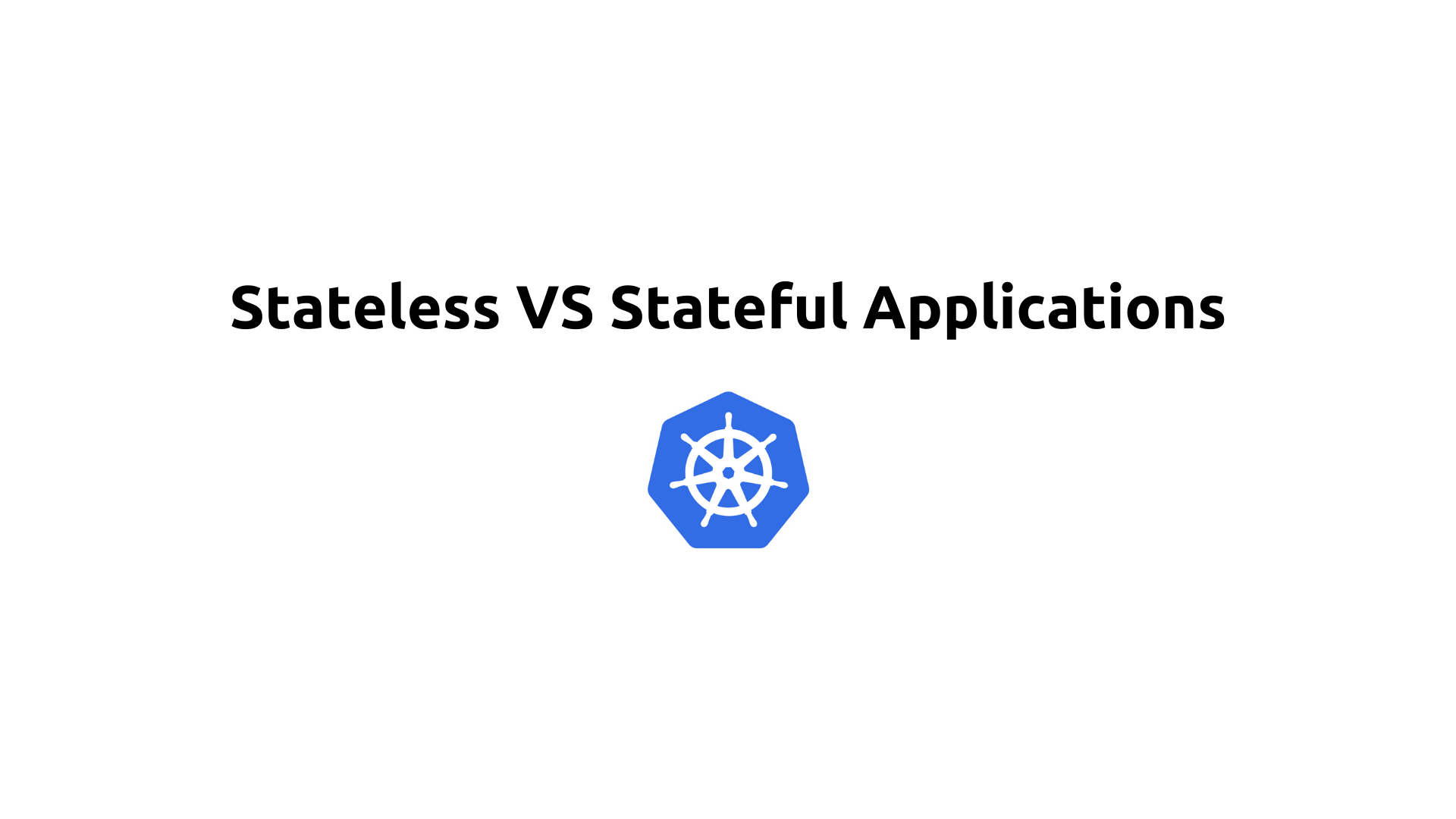Stateless VS Stateful Applications
 Saurabh Adhau
Saurabh Adhau
Introduction
Kubernetes, the leading container orchestration platform, provides powerful tools for deploying and managing applications. Two fundamental types of applications deployed in Kubernetes are stateless and stateful applications. Understanding the differences between these two types is crucial for designing resilient, scalable, and efficient deployments in Kubernetes.
Stateless Applications
Definition: Stateless applications are designed to operate without relying on stored session information or stateful data. Each request from a client can be handled independently, without knowledge of previous interactions.
Characteristics:
No Persistent State: Stateless applications do not store session information or maintain state across requests.
Horizontal Scaling: They can scale horizontally by adding more instances (replicas) to handle increased load.
State Management: Any state required for operation is typically managed externally, such as in databases, caches, or other external services.
Fault Tolerance: Stateless applications are inherently fault-tolerant because any instance can handle any request, and failures in one instance do not affect others.
Example Use Cases:
Web servers serving static content or APIs.
Microservices handle independent requests, like payment processing or user authentication.
Stateless components of larger applications, where the application’s state is managed by a separate stateful service.
Deployment in Kubernetes:
Stateless applications are typically deployed using Kubernetes Deployments. Deployments manage the lifecycle of pods, ensuring a specified number of replica pods are running to handle incoming requests. They facilitate easy scaling, rolling updates, and self-healing capabilities, ensuring high availability and reliability.
apiVersion: apps/v1
kind: Deployment
metadata:
name: nginx-deployment
spec:
replicas: 3
selector:
matchLabels:
app: nginx
template:
metadata:
labels:
app: nginx
spec:
containers:
- name: nginx
image: nginx:latest
ports:
- containerPort: 80
Stateful Applications
Definition:
Stateful applications maintain data or session state across various requests and are designed to persist and manage this state throughout their lifecycle.
Characteristics:
Persistent State: Stateful applications manage and persist state internally, often using storage volumes (persistent volumes) that are maintained across pod restarts or rescheduling.
Ordered Operations: They may require ordered startup, scaling, or shutdown processes due to dependencies or data consistency requirements.
Identity: Each instance of a stateful application typically has a unique identifier or hostname, enabling clients to reliably locate and interact with specific instances.
Data Integrity: Stateful applications prioritize data consistency and may use mechanisms like leader election or distributed consensus protocols to maintain integrity.
Example Use Cases:
Databases such as MySQL, PostgreSQL, or NoSQL databases like MongoDB.
Messaging systems like Kafka or RabbitMQ.
Applications requiring consistent and reliable data access and management.
StatefulSet in Kubernetes:
Stateful applications are deployed using Kubernetes StatefulSets. StatefulSets manages the deployment and scaling of pods while maintaining stable network identities and persistent storage volumes for each pod. They ensure ordered deployment and scaling, provide stable network identifiers, and support stateful service discovery.
apiVersion: apps/v1
kind: StatefulSet
metadata:
name: mysql
spec:
replicas: 3
serviceName: mysql
selector:
matchLabels:
app: mysql
template:
metadata:
labels:
app: mysql
spec:
containers:
- name: mysql
image: mysql:5.7
ports:
- containerPort: 3306
volumeMounts:
- name: mysql-persistent-storage
mountPath: /var/lib/mysql
volumeClaimTemplates:
- metadata:
name: mysql-persistent-storage
spec:
accessModes: [ "ReadWriteOnce" ]
resources:
requests:
storage: 10Gi
Choosing the Right Approach
When deciding between stateless and stateful deployments in Kubernetes, consider the following factors:
Data Persistence: Does your application require persistent data storage and management (stateful), or can it operate with transient data (stateless)?
Scalability: Is horizontal scaling (stateless) or ordered scaling with stable identifiers (stateful) more suitable for your application’s requirements?
Operational Complexity: Stateful applications typically require more complex management due to data consistency and persistence requirements compared to stateless applications.
By understanding the differences between stateless and stateful applications in Kubernetes and choosing the appropriate deployment strategy (Deployments for stateless or StatefulSets for stateful), you can ensure your applications are deployed efficiently, reliably, and in alignment with their operational requirements. This understanding is critical for maximizing the benefits of Kubernetes’ orchestration capabilities while ensuring the resilience and scalability of your applications.
Subscribe to my newsletter
Read articles from Saurabh Adhau directly inside your inbox. Subscribe to the newsletter, and don't miss out.
Written by

Saurabh Adhau
Saurabh Adhau
As a DevOps Engineer, I thrive in the cloud and command a vast arsenal of tools and technologies: ☁️ AWS and Azure Cloud: Where the sky is the limit, I ensure applications soar. 🔨 DevOps Toolbelt: Git, GitHub, GitLab – I master them all for smooth development workflows. 🧱 Infrastructure as Code: Terraform and Ansible sculpt infrastructure like a masterpiece. 🐳 Containerization: With Docker, I package applications for effortless deployment. 🚀 Orchestration: Kubernetes conducts my application symphonies. 🌐 Web Servers: Nginx and Apache, my trusted gatekeepers of the web.